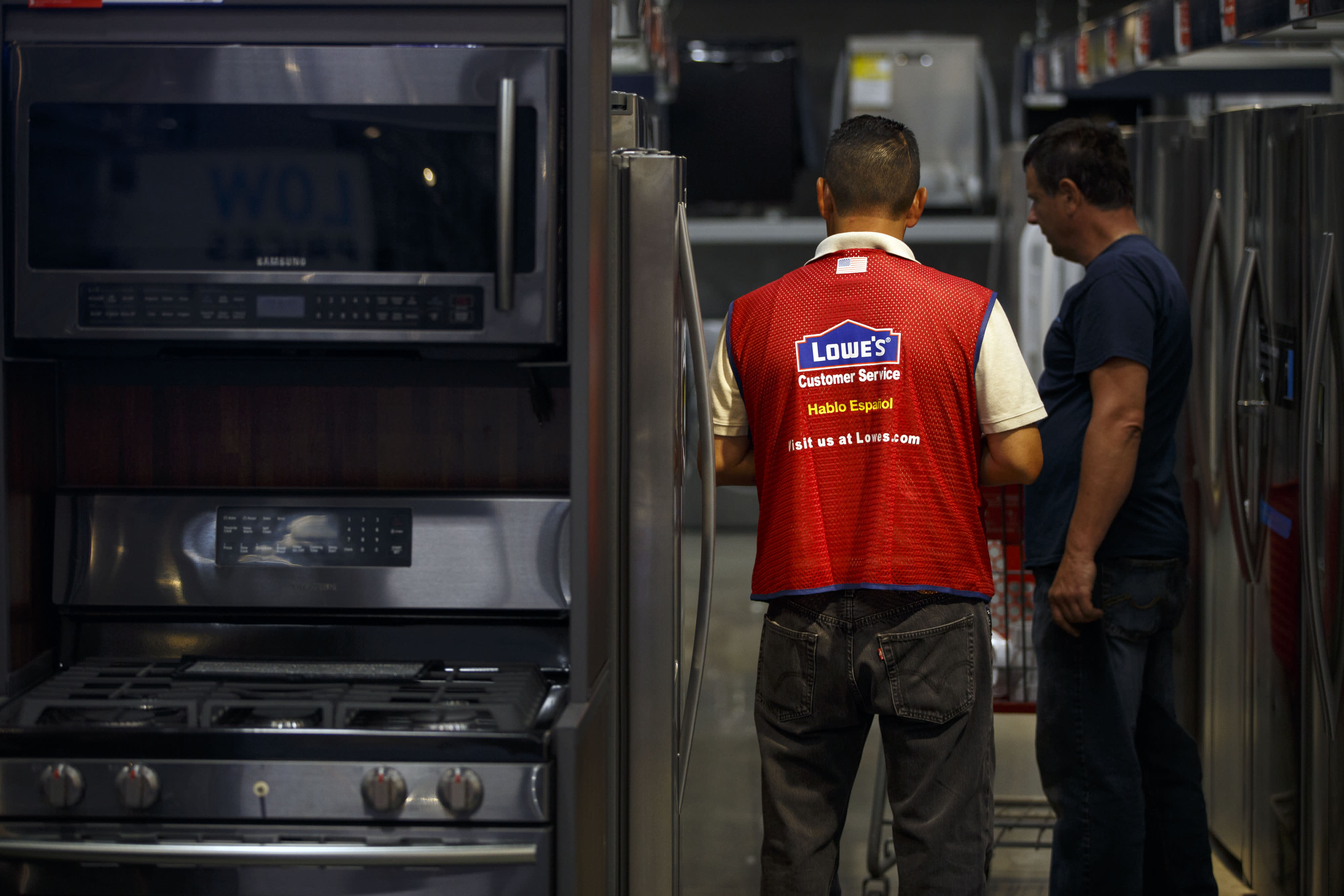
Americans who are stuck in their homes during the coronavirus pandemic aren’t just video-conferencing and binge-watching TV. Lowe’s CEO Marvin Ellison said they’re also replacing appliances and doing DIY projects.
In an interview with CNBC on Wednesday, Ellison said the home improvement retailer has seen an increase across nearly every store category as customers not only stock up on cleaning supplies, but fix up and maintain their homes.
“As customers are sheltering in place, they’re looking at that deferred list of home projects,” he said. “As they spend time around the home, they now have more time on their hands to tackle some of those things.”
Ellison commended employees who are working hard in stressful circumstances. Lowe’s staff has been helping customers with urgent home repairs, delivering refrigerators, fixing leaking pipes or electrical problems, Ellison said.
“They know that we have to be there because even though this is a crisis for our country and community, if your home is not functional that adds additional stress.”
“We’ve had hurricanes, floods, wildfires, tornadoes and our associates are first to respond and first to give back to the community,” he said. “In their minds, this is no different because they know if there’s a customer who’s coming in and they need a freezer because they purchased a lot of food products, we need to have the ability to get it to them and deliver it for them.”
On Wednesday, Lowe’s said it will give special payments of $300 to full-time employees and $150 to part-time and seasonal employees to express the company’s appreciation.
It’s also extending emergency paid leave for up to four weeks for people who are at a higher risk of COVID-19. It’s offering free telemedicine to all employees and their families, even if they are not enrolled in the company’s health benefits, he said.
The company committed $25 million to relief efforts for its employees and the business community, including a $10 million donation of protective products to medical professionals.
Spring is usually the busiest season for Lowe’s, as customers take advantage of warmer weather to garden or do home projects. This year, however, the home improvement retailer has seen different purchasing patterns and demand for certain items because of longer home stays.
For example, Ellison said some customers are buying new water heaters as homes fill up with kids home from college, or additional refrigerators and freezers as they stock-up on food. He said customers are buying items related to “safety and security,” too.
Customers are still putting seasonal items in their carts, he said. And, even in parts of the country with strict lockdowns, in-store sales are strong. However, he declined to share sales figures, saying that even with the sales uptick, long-term business trends are hard to predict.
“What could be up double digits this week or this month, could be down because of the fluid nature of this,” he said.
Lowe’s stores have stayed open as other retailers have shuttered, since they sell essential goods. The company reduced store hours to allow more time for stocking products and doing additional cleaning.
Store operations have changed to lower risk and help employees. Overhead announcements and signs urge customers to stay six feet apart. Mobile checkouts help decrease density in checkout lanes. Deliveries are left at customers’ front doors or garages, and home installation employees ask if anyone in a household has tested positive for COVID-19 before they enter. Stores have pantries with food that employees can eat at work or take home to their families.
Ellison said Lowe’s has not revised or withdrawn its forecast — and hasn’t yet decided if it will postpone strategic priorities.
It is still looking to fill 30,000 full-time, part-time and seasonal roles. Prior to the outbreak, Lowe’s announced it was ramping up its workforce for the busy spring season with an expected 53,000 jobs and it’s already filled many of them.
The home improvement retailer is in the middle of a company-wide turnaround led by Ellison, who took the helm in 2018. As part of that effort, it’s overhauling its website, expanding its e-commerce offerings and focusing more on selling to professional homebuilders and contractors.
But the transformation is still underway. In late February, the company reported weaker than expected sales in the fiscal fourth quarter and had a forecast that disappointed investors.


